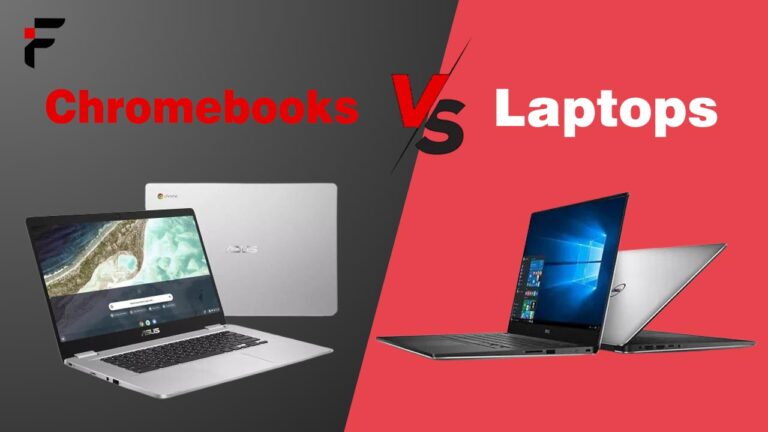Modern day technology is evolving fast and providing us with immersive solutions for our modern problems. For instance, learning students are now required digital working machines to get better concepts of EduTech.
Therefore, technology has offered them two different options to get solutions to improve their learning experience. If you are interested in knowing which solution is the best and suitable for your requirements, then keep reading!
Here is the complete guide for you on Chromebooks vs Laptops to choose the best for student learning. Let’s Start!
Chromebooks – An Intro
Chromebooks are laptop devices that run on Google’s Chrome OS operating system. Chrome OS is built around the Chrome browser, with access to web apps and extensions from the Chrome Web Store.
These devices offer a simplified and streamlined computing experience focused on web-based functions like browsing, word processing, and more. Moreover, they also enhance surfers’ browsing experience for boosted computing experience.

Some key characteristics of Chromebooks include:
Affordable Pricing
If you are a member of a middle class family, then Chromebooks are for you because of their cost-effective options. They start from $200 for basic models, which makes them an attractive option on budget.
Cloud Centric Design
With files and apps stored online via Google services like Drive, Gmail, and Docs, a Chromebook remains functional even without an internet connection for basic tasks.
Easy to Use Interface
Chrome OS features a clean and intuitive interface optimized for keyboard and touch navigation. System updates happen automatically in the background to provide users with convenience.
Web Based Apps
While the app selection is growing, Chromebooks run web apps from the Chrome Store and Google Play instead of traditional desktop programs.
Lower Specifications
Chromebooks have lack of powerful processors, RAM, and storage options to make them affordable. While they are the least demanding OS on system resources.
Laptops – Explained
When referring to laptops in this context, we mean traditional clamshell devices running either Windows or macOS. Some key attributes of laptops include:
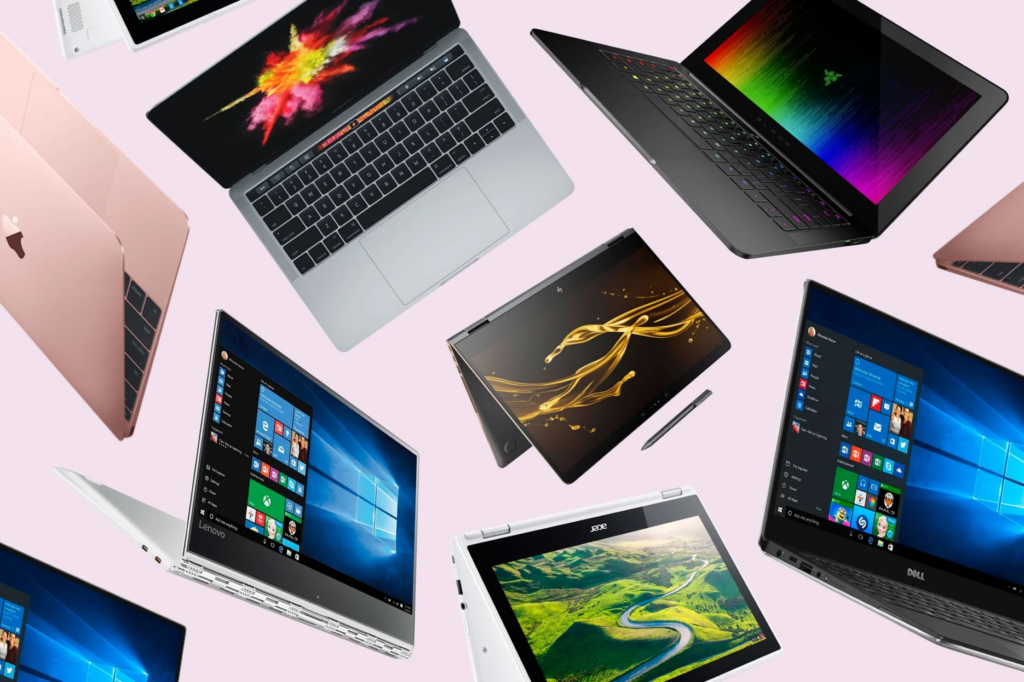
Robust Operating Systems
Windows and macOS allow access to a huge library of desktop applications beyond just web apps.
More Powerful Hardware
Laptops usually feature more potent processors, discrete graphics cards, ample RAM, and large solid-state or hard disk drives.
Versatile Functionality
With high-performance internals, laptops can handle intensive tasks like video editing, programming, and PC gaming in addition to basic productivity.
Wide Price Range
While expensive high-end models exist, laptops start around the same entry-level price as Chromebooks and have affordable options too.
Offline Access
Files and programs can be stored and run locally on laptops without an internet connection for maximum flexibility.
Complex Setup
Powerful specs require more involved installation, updates, troubleshooting, and security maintenance compared to Chromebooks.
Chromebooks vs Laptops: Comparing Specifications
Here is a quick specification between Chromebooks vs laptops.
| Specification | Chromebook | Laptop |
|---|---|---|
| Operating System | Google Chrome OS (web-based) | Windows, macOS (desktop based) |
| Processor | Celeron, Pentium | Core i3/i5/i7, AMD Ryzen |
| RAM | 2-4GB | 4GB+ |
| Storage | 16-32GB eMMC | 128GB SSD+ |
| Display | 11-15″ 1080p | 11-15″ 1080p, 4K, touch |
| Battery Life | 8-12 hours | 6-10 hours |
| Software | Web & mobile apps | Desktop apps, games, etc. |
| Price Range | $200-800 | $300-1800 |
| Use Cases | Basic tasks, media | All tasks, gaming, design |
As you can see, laptops pack significantly more powerful components to run intensive programs. On the other hand, Chromebooks focus on efficiency for basic tasks using lightweight web apps.
Chromebooks vs Laptops: Comparing Software Ecosystems
The available applications and functionality also differ notably between Chrome OS and Windows/macOS:
- Chrome Web Store: Chromebooks access web apps for productivity, entertainment, and communication that work offline via Chrome. Selection growing.
- Google Play Store: Android apps can supplement the Chrome Web Store, adding versatile mobile apps to Chromebooks.
- Windows Store: A growing digital marketplace, but Windows still relies heavily on traditional desktop programs for full power.
- macOS App Store: Supplements macOS with some apps, but Mac is still defined by its robust selection of desktop programs.
- Microsoft Office: Web/mobile versions work on Chromebooks, but full Office on laptops has extra features for complex documents.
- Adobe Creative Cloud: While web/mobile apps exist, the full Creative Cloud is not available on Chrome OS for photo/video editing.
- PC Games: Options are limited on Chromebooks, but laptops can access the entire Steam library and run even graphically demanding titles.
So, in summary, Chromebooks provide a curated selection of web/mobile apps, whereas laptops give you access to the complete libraries of Windows/macOS desktop programs for all use cases.
Chromebooks vs Laptops: Comparing Use Cases
Now that we understand the technical differences let’s examine which device may be a better fit depending on a student’s particular learning needs and activities:
- General Productivity: For basic tasks like documents, spreadsheets, presentations, and web browsing – a Chromebook is perfectly suitable.
- Media Consumption: Watching videos, light photo editing, social media – a Chromebook handles this well and has a great battery life for mobile use.
- Coding/Programming: While possible on Chromebooks, advanced coders may benefit more from a traditional laptop and its wider software/hardware capabilities.
- Graphic Design: For photo/video editing, and 3D modeling, a laptop provides more processing power and access to professional desktop apps like Adobe CC.
- Gaming: Chromebooks can only play very basic web games, so a gaming laptop is necessary for modern PC titles and hardware-intensive multiplayer.
- Computer Science: Students studying programming, engineering, or other tech fields are best served by the robust ecosystem and horsepower of a traditional laptop.
So, a Chromebook fulfils the average student’s needs for writing papers, researching online, and consuming multimedia. But a laptop opens more doors for computer science, creative fields, and advanced hobbyists.
Chromebooks vs Laptops: Specific Product Recommendations
Now that we understand the pros and cons of each device type, here are some top product recommendations for students based on specific use cases and budgets between Chromebooks vs laptops.
Budget Chromebook for Basic Tasks ($200-$300)
Lenovo Chromebook Duet – Excellent 2-in-1 tablet/laptop design for media/productivity on a tight budget.

Mid-Range Chromebook ($300-$500)
Acer Spin 713 – Powerful specs including Core i5 CPU for more demanding tasks in a premium 2-in-1 package.

Premium Chromebook ($500-$800)
Asus Chromebook Flip CX5 – Beautiful 15″ full HD touchscreen and Core i3 CPU for advanced users.
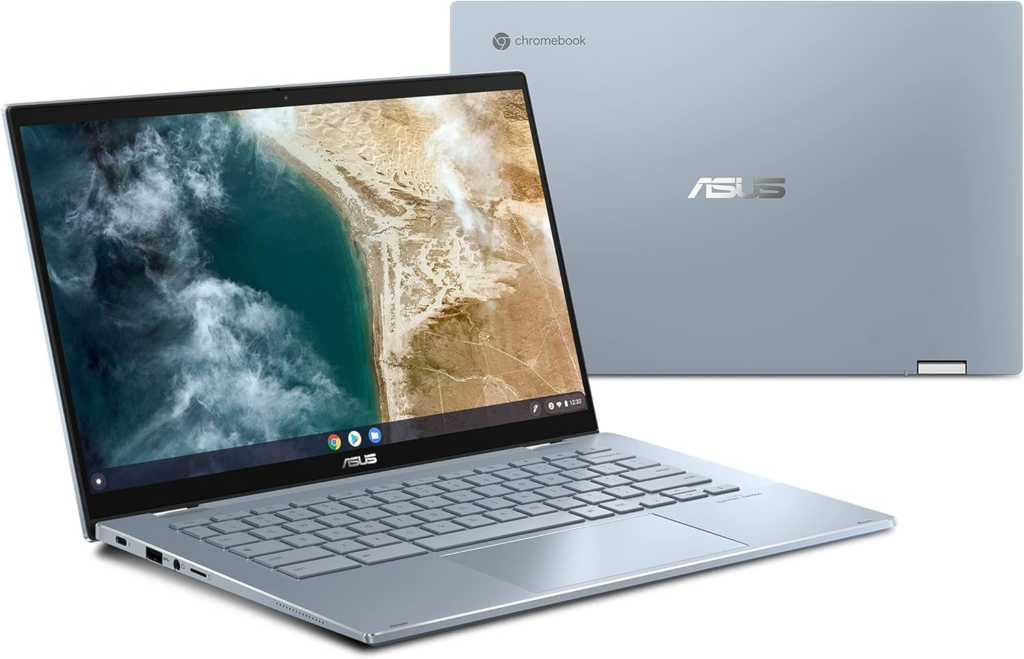
Budget Laptop for Productivity ($300-$500)
Acer Aspire 5 – Reliable laptop with the latest Intel or AMD processor and ample storage for school assignments.
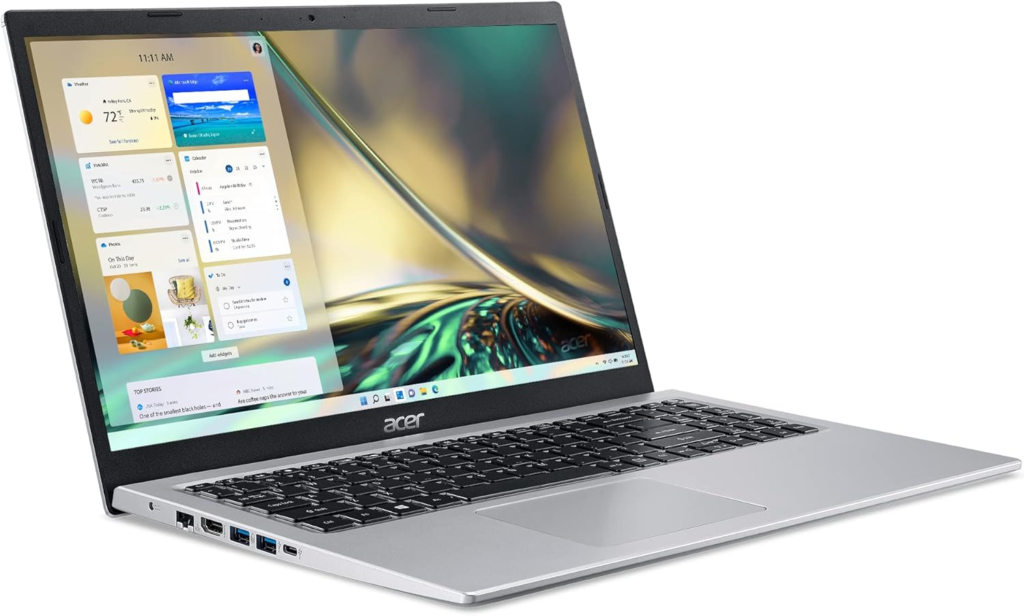
Mid-Range Gaming/Creator Laptop ($800-$1200)
Lenovo IdeaPad Gaming 3 – Discrete NVIDIA graphics allow both work and play for aspiring game designers.

Premium Creator Laptop ($1200-$1800)
Microsoft Surface Laptop Studio 2 – A work of art studio laptop that transforms for any workflow.
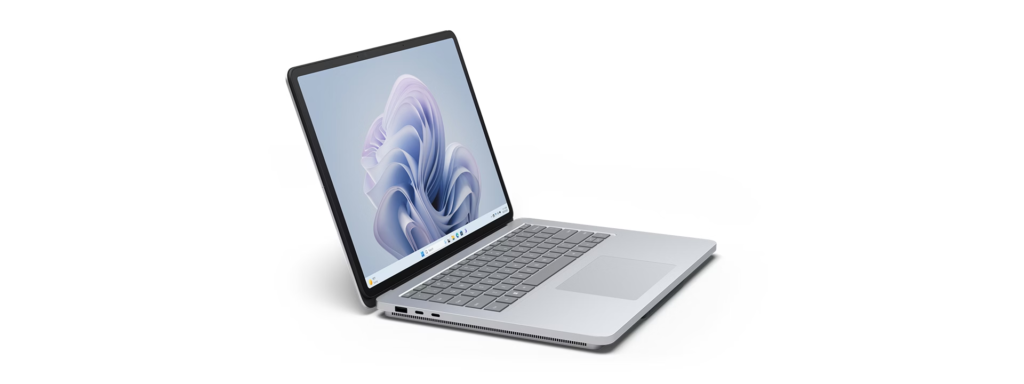
Quick Summary
Well, you have learned many things about Chromebooks vs laptops. I hope this comprehensive guide is a proven document for you to choose the suitable device for you. Whether you need to stay on budget or want a gaming laptop, you may select from recommendations according to your needs and budgets and educational budgets.


